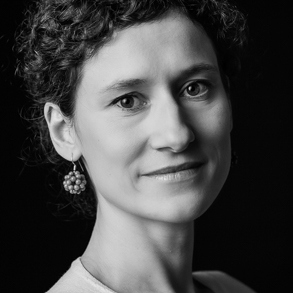Something in the air: Using cloud software
Phrases like “using the cloud,” “software in the cloud,” or “cloud computing” long ago ceased to generate primarily meteorological associations. Our mail hangs in the cloud today, along with various computer programmes—from simpler tools like “GoToMeeting” to complex customer relationship management (CRM) and enterprise resourcing planning (ERP) systems.
All of these programmes can be used under the principle of “software as a service” (SaaS). What does this involve? According to the definition established by the National Institute of Standards and Technology (an agency of the US Department of Commerce), SaaS is “the capability provided to the consumer to use the provider’s applications running on a cloud infrastructure” (in simple terms, on the supplier’s servers linked with the Internet). “The applications are accessible from various client devices through either a thin client interface, such as a web browser (e.g., web-based email), or a program interface. The consumer does not manage or control the underlying cloud infrastructure including network, servers, operating systems, storage, or even individual application capabilities, with the possible exception of limited user-specific application configuration settings.”
SaaS and copyright
The main legal doubt framed by this definition concerns a totally fundamental issue: whether use of SaaS encroaches on a copyright holder’s monopoly, and thus whether it is essential to obtain a licence in order to lawfully use cloud software. There are at least three different ways to answer this question.
The most commonly accepted interpretation points to the technical aspect of using cloud software. The customer generally does not copy the programming on the user’s own server, because the essence of the service is the ability to use the programme without downloading and installing it. Proponents of this conception thus recognise that the user does not conduct permanent or temporary copying of the computer programme in whole or part, by any means or in any form; that is, the user does not perform any of the actions making up the fields of exploitation of a computer programme stated in Art. 74(4) of Poland’s Copyright Act. Therefore, as the user does not encroach on any of the fields of exploitation from the fixed catalogue defined in the Copyright Act, the customer does not require a licence from the copyright holder for use of the work.
The second proposed interpretation is also based on the wording of Art. 74(4) of the Copyright Act, but its supporters propose a broader understanding of the field of exploitation defined as “copying a computer programme.” They point out that in using the programme, it essentially is copied—not on the user’s server but on the provider’s server. Because the act does not specify where the copying of the protected work is to be done, it should be recognised that even when as a result of the user’s actions the copying is done on the service provider’s infrastructure, the software is being used in a manner that requires the user to obtain a relevant licence.
SaaS is perceived differently by those who propose classifying this manner of use as a new field of exploitation. They point out that use of programming in the cloud gives the user an entirely new capability, not available before, because it permits access to a computer programme at any time, from wherever the user is located. The location where the programming is installed and where the device is used for working with the application is also irrelevant. These features of the service, in their view, demonstrate the economic distinctness of SaaS, justifying treatment of this mode of using software as an entirely new field of exploitation.
Which of these proposed interpretations is correct and will gain acceptance in practice? We will have to wait and see the positions taken in the case law.
The user should consider a licence
But it is always worth selecting a safe solution. The situation of a user of software in the cloud may be further complicated by differing factual conditions—it will not always be the case in SaaS that the customer obtains access to the programme only in the cloud. Often the use of the programme will require installation of a plug-in, i.e. an application permitting proper connection to the software in the cloud. Use of the plug-in, saved and launched (and therefore copied) on the customer’s server, will usually require a separate licence. And a licence may be required to use another protected work—the documentation supplied together with the cloud software.
So in construing the contract for SaaS, it should be carefully considered what elements are supplied by the provider, and under what rules, so that it can be more precisely determined whether and to what extent a licence is required.
